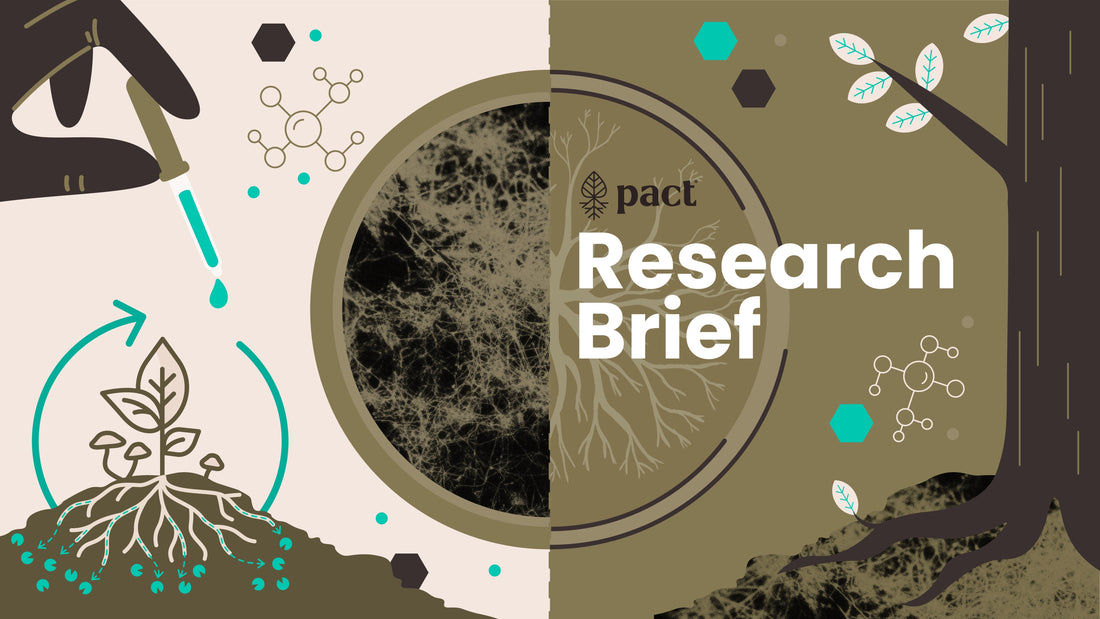
Where Does Stropharia Grow Natively?
Share
Stropharia rugosoannulata is incredibly versatile, growing on forest floors, vegetable gardens, and even in containers or urban/suburban green spaces. It grows natively in Europe and the United States (more common in the northeast, east of the Great Plains region), and has been introduced to Asia, New Zealand, and Australia.
Stropharia Rugosoannulata’s Habitat Range
Below is a range map from iNaturalist showing verified observations (in red) of Stropharia rugosoannulata in the wild and the current known range of S. rugosoannulata at the continental scale (in green).

An important note when looking at this map: it can be challenging to identify the actual range of fungi, as they are difficult to identify in mycelial form without the presence of a fruiting body (i.e. mushroom). Range maps created by iNaturalist are helpful, but not complete. While the maps are constantly updated as observations are reported and verified, iNaturalist has only been collecting data since 2008 and it relies on citizen-science (public participation). It is likely that S. rugosoannulata grows natively (or has been introduced or cultivated) outside of the ranges reported by this map.
Locations Where Stropharia Has Been Introduced
The European Union Global Register of Introduced and Invasive Species is an initiative that exists to track introduced and potentially invasive species throughout the continent. It was created with the goal of identifying said species, controlling or eradicating them, and putting measures in place to prevent invasive species spread. They report that S. rugosoannulata has been introduced in Austria, Poland, Czech Republic, Norway, Germany and Slovenia with no evidence of negative impact. The E.U. initiative also found that S. rugosoannulata has been introduced to other countries with a range of dominant ecosystems and have found no evidence of invasive characteristics or negative environmental impact.
Not only does S. rugosoannulata not meet the criteria of an invasive species, it is widely cultivated around the world for food (Yang 2022). The Wine Cap mushroom, as it is commonly known, is in the top ten mushrooms grown and traded commercially across the world (Gong 2018). The UN’s Food and Agriculture Organization recommends it to developing countries as a mushroom for widespread cultivation (De Oliveira 2020).
Stropharia Rugosoannulata Has Limited Risk Of Spreading
S. rugosoannulata is widely regarded as a safe fungus, not pathogenic to other organisms. In the U.S., the Department of Health and Human Services publishes the Biosafety in Microbiological and Biomedical Laboratories which catalogs various microbes of interest (ATCC 2018). They assigned S. rugosoannulata a biosafety level of 1, meaning it presents minimal hazard to people and the environment.
Saprotrophic fungi within the Stropharia genus have limited potential to become invasive species, as their ecological niche and growth requirements constrain their spread. These fungi decompose organic matter, particularly in nutrient-rich environments like wood chips, compost, or manure. Their reliance on specific substrates and environmental factors limits their ability to outcompete native fungi or spread uncontrollably in new environments.
In addition, Stropharia species do not generally produce long-lasting or highly resilient spores (Norros et al. 2015) (Nguyen 2018), reducing their likelihood of colonizing new ecosystems that they are not considered native to. Studies on the impact to soil communities by Stropharia rugosoannulata in Chinese forests found that, even when grown on a large-scale, the mycelium disappears if not provided with more food after a time (Gong 2018). This is consistent with findings from a field-scale study on a farm in New York, the S. rugosoannulata, introduced a year prior, did not recolonize a year later (Gallaher 2020).
Bibliography
-
ATCC. 2018. Safety Data Sheet for Stropharia rugosoannulata. - LINK
-
De Oliveira J.B.H., Pereira P.R.C., dos Santos V.S., Ferreira J.M., Dutra J.C.V. 2020. Stropharia. In: Amaresan N., Kumar S.M., Annapurna K., Kumar K., Sankranarayanan A., editors. Beneficial Microbes in Agro-Ecology: Bacteria and Fungi. Academic Press; Cambridge, MA, USA. p. 752. - LINK
-
Gallaher. 2020. Final Report for Improving Compacted Soils with Stropharia Mushrooms. - LINK
-
Gong S, Chen C, Zhu J, Qi G, Jiang S. 2018. Effects of wine-cap Stropharia cultivation on soil nutrients and bacterial communities in forestlands of northern China. PeerJ. 6(e5741):e5741. doi:10.7717/peerj.5741. - LINK
-
Nguyen NH. 2018. Longevity of light- and dark-colored basidiospores from saprotrophic mushroom-forming fungi. Researchgate.net. - LINK
-
Norros V, Karhu E, Nordén J, Vähätalo AV, Ovaskainen O. 2015. Spore sensitivity to sunlight and freezing can restrict dispersal in wood-decay fungi. Ecol Evol. 5(16):3312–3326. doi:10.1002/ece3.1589. - LINK
- Yang Y, Meng G, Ni S, Zhang H, Dong C. 2022. Genomic Analysis of Stropharia rugosoannulata Reveals Its Nutritional Strategy and Application Potential in Bioremediation. J Fungi (Basel). 8(2):162. doi: 10.3390/jof8020162. PMID: 35205916; PMCID: PMC8874372. - LINK
